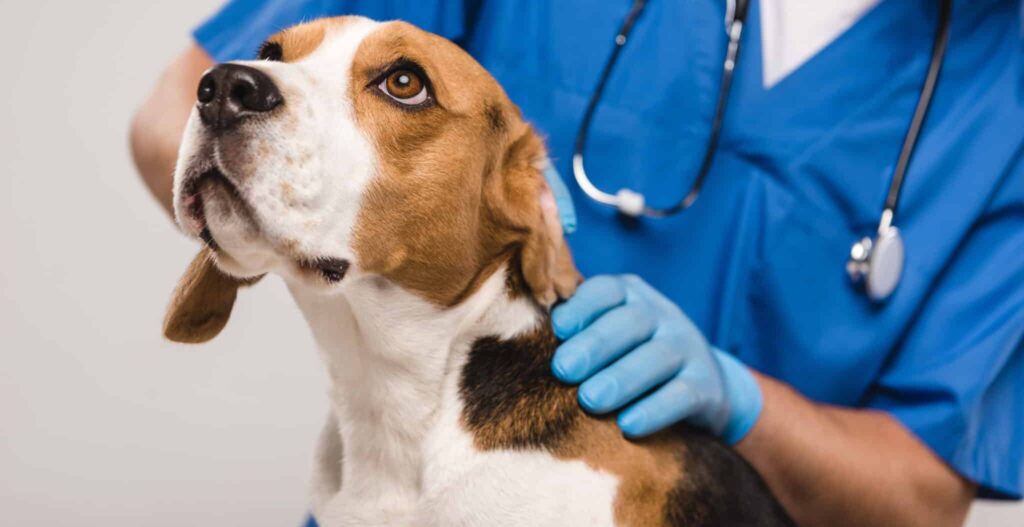Most pet owners consider their pets as family members and want to provide them with the best possible veterinary care. But this is becoming more difficult as vet care costs rise. Budgeting for expected wellness expenses by setting money aside is a good start, but you should also consider setting up an emergency pet fund, opening a pet credit card or purchasing pet health insurance to help cover unexpected costs.
How Pet Insurance Helps with Veterinary Costs
Pet insurance works similarly to human health insurance, with a few differences. You pay a monthly or annual premium for veterinary care coverage, but most pet insurance plans require you to pay your veterinarian directly and receive reimbursement for the bill later. Major plans cover accidents and illnesses, and many also offer optional wellness and dental coverage. Sliding reimbursement rates and deductible amounts allow you to customize most insurance policies.
One major caveat to pet insurance is that it rarely covers pre-existing conditions, unlike many human health insurance plans. So the earlier you acquire your pet’s health insurance, the more complete their coverage will be over time. You can still purchase a plan later in your pet’s life but will have to continue covering costs associated with any existing conditions. For example, if your pet has cataracts when you purchase an insurance policy versus developing it afterward, your provider will likely not cover treatment.
Similar to a human health insurance policy, pet insurance premiums rise as your furry friend ages. Premiums may also depend on your pet’s breed. Average annual pet health insurance costs between $350 and $500 per year for a standard accident and illness plan. When you consider unexpected pet expenses, insurance can save you money over time and make healthcare decisions easier.
What Pet Insurance Could Save You
Let’s say your pet had an emergency vet visit that cost $150. With an 80% reimbursement rate, you would pay only $30 out of pocket.
Accident and Illness Plans
A good accident and illness plan covers pet injuries, illnesses and chronic diseases — as long as they are not pre-existing. Always read your policy’s fine print carefully before choosing a plan. You should also consider what could happen to your pet down the road and what treatments you’d like covered. Avoid plans with per-condition spending limits or per-condition deductibles.
We recommend that you consider the following coverages when choosing a pet insurance policy:
- Hereditary, congenital, and breed-related conditions: Insurance is necessary for all purebred pets due to the risk of breed-specific diseases and should be considered for most other pets.
- Bilateral conditions: If your pet tears a knee ligament on one side, they likely will tear the other. You want to make sure your plan covers both the initial and second incidents.
- Cancer care: Most plans include cancer care, but may have specific exclusions or limits regarding treatment.
- Rehabilitation: If your pet has surgery, will the plan cover their post-operative rehabilitation? This is an important consideration so you have coverage for any resulting treatments.
- Complementary and alternative therapies: If you prefer a holistic approach, you’ll want this coverage for treatments such as acupuncture or laser therapy.
- Chronic conditions: Check your policy’s coverages for common chronic conditions, such as kidney disease or arthritis. Good pet insurance plans cover long-term conditions without significant limitations.
Accident-Only Plans
Accident-only plans are not the best option for most pet owners since they do not provide continued coverage for ongoing medical concerns. While these policies may be a good option if your pet has pre-existing conditions, you should focus your coverage on unexpected events like emergency vet visits.
Preventive Care Plans
Pet insurance is not intended to cover routine wellness exams and costs, which you can instead plan and budget for. If you add a preventive care or wellness plan to your policy, you’ll pay a higher monthly premium but will have fewer out-of-pocket veterinary expenses.
When evaluating preventive care plans, compare your pet’s typical annual wellness costs to any additional premium charges. You should also consider your budgeting capabilities and if you can put money aside for your pet’s wellness care, which lessens the need for pet insurance with a preventive care add-on.





